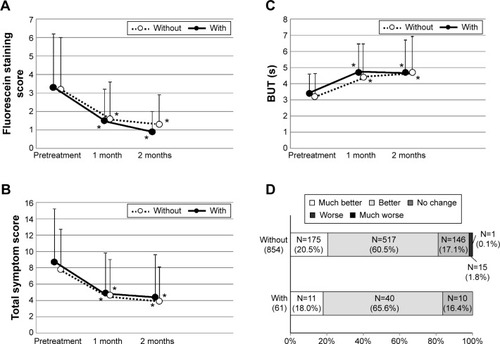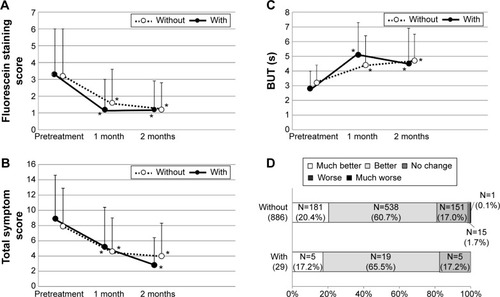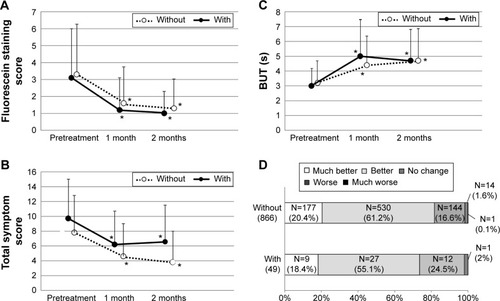Figures & data
Table 1 Subgroup population in each risk factor
Figure 1 Corneal and conjunctival fluorescein staining scores (A), total symptom scores (B), tear film break-up time (BUT) (C), and patient-reported outcomes (D) in patients with and without the contact lens (CL) use.

Figure 2 Corneal and conjunctival fluorescein staining scores (A), total symptom scores (B), tear film break-up time (BUT) (C), and patient-reported outcomes (D) in patients with and without concomitant meibomian gland dysfunction (MGD).

Figure 3 Corneal and conjunctival fluorescein staining scores (A), total symptom scores (B), tear film break-up time (BUT) (C), and patient-reported outcomes (D) in patients with and without concomitant conjunctivochalasis.

Table 2 Incidence of adverse reactions in each subgroup
